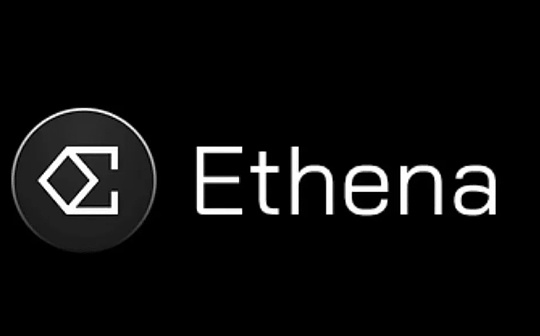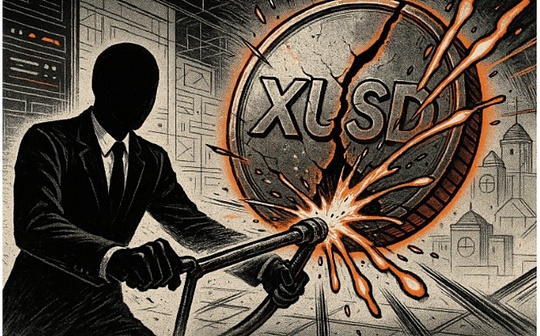
Brief introduction
Stable coins occupy a vital position in the encryption industry.As of July 25, 2024, the market value of the stable currency was approximately US $ 165 billion, accounting for nearly 7%of the entire cryptocurrency market of US $ 2.417 trillion.Among them, Tether (USDT) is currently the third largest cryptocurrency in market value, second only to Bitcoin and Ethereum.
This article will explore the important role of stable coins, including definition, classification and stable currency in the field of digital currency.We will explore the operating mechanism, potential risk, and whether the USDE can be regarded as “upgraded version” through the study of Ethena USDE’s case research.
Definition: What is stablecoin?
According to the definition of the Financial Stability Board and the International Settlements, stablecoin is “a cryptocurrency that maintains stable value relative to specific assets or a group of assets” (“A Cryptocurrency That THATAIMS to Maintain A Stable Value Relative to a Specified Asset, or A POOL OR BASKET of Assets “).Under normal circumstances, stablecoins are linked to the legal currency represented by the US dollar.
Motivation: Why do we need stablecoin?
There is no shortage of discussions on stablecoins in the market.But the first question is: Why do we need stablecoin?
-
Compared with traditional assets
First of all, in the context of Web3’s large -scale application, digital assets provide more convenient trading more than traditional assets.Stablecoin is used as a stable exchange medium to promote daily transactions, and at the same time, it can also achieve fast and low -cost cross -border payment, avoiding the processing delay and high cost of traditional banking systems.
-
Compared with other cryptocurrencies
Secondly, stable currency helps reduce the impact of value fluctuations.Because mainstream cryptocurrencies such as BTC or ETH are inherently volatility, they are not suitable for stablecoins.During the market fluctuations, stablecoins provide unique value stability, and act as a shelter of value preservation.
Category: How to keep stable coins “stable”?
-
Mortgage stable currency
The mortgage stable currency is completely supported by other assets to ensure that its value is supported by other forms of mortgage.Suppose that these mortgagers are managed properly and have a feasible redemption mechanism. Due to potential arbitrage opportunities, the value of such stable coins is unlikely to fall below the value of its mortgage assets.Typical mortgage stablecoin includes:
-
French currency mortgage stabilizer: supported by the legal currency reserves, such as the US dollar.Typical examples include Tether USD (USDT) and USD Coin (USDC), which are the two major stablecoins in the market value.As of July 2024, their total market value accounted for more than 90%of the total market value of stable coins.
-
Commodity mortgage stablecoin: supported by commodity reserves, such as gold or other real -world assets.A typical example is Tether Gold (XAUT), which uses gold as a mortgage.
-
Cryptocurrency mortgage stabilizer: supported by other cryptocurrency reserves, such as BTC or ETH.A typical example is DAI developed by MakerDao, which use ETH and other approved Ethereum assets as mortgage.
-
Algorithm stable currency
-
Clearance: In order to ensure that all the value of all unprecedented stable currency debt has always been fully mortgaged, some stablecoin uses a liquidation mechanism, that is, the risk mortgage of the stable currency issued by the auction clearing is lower than its corresponding issuance.This mechanism usually also includes an initial excess mortgage (such as 150%), which provides a buffer between the value of the mortgage and the value of the corresponding stablecoin.Typical examples include the current largest algorithm stable currency DAI.
-
Destruction and casting: This method is that the total demand remains unchanged, by destroying existing tokens to reduce the total supply, or casting new bonds to increase the total supply.Assuming that the stable currency falls from the target price of $ 1 to 0.9 US dollars, the algorithm will automatically destroy some tokens to introduce more scarcity, resulting in a reduction in circulation, thereby pushing the price of stable coins.Typical examples include Terrausd (USS), which uses a built -in fixed exchange rate exchange mechanism to create potential arbitrage opportunities for users by destroying and casting; however, during the large -scale decline in the marketThe loss of more than $ 40 billion is the biggest loss in the history of Web3.
-
Adjust the borrowing interest rate: This method is assumed that people are usually profitable, and control the supply of stablecoins in the “borrowing income framework” by increasing or reducing the central lending interest rate (essentially provided for stable currency holders to provide stable currency holdersPotential income opportunities).Assuming that the stable currency falls from the target price of $ 1 to 0.9, the algorithm will automatically increase the borrowing interest rate, attract (that is, lock) more circulation, thereby pushing the price of stable coins.Typical examples include Beanstalk (Bean), which manages the circulation of Bean by adjusting the amount of loan (called SOIL).
-
Centralized risk
-
Market risk
Algorithm stabilizes to ensure the safety of mortgage through the algorithm, or adjust the market circulation (supply and demand status) to maintain stability.Typical methods include:
Notice
It is worth noting that these classification methods are not mutually exclusive.Stablecoins can be implemented at the same time to maintain stability.For example, DAI is supported by cryptocurrency mortgages and algorithm adjustments (that is, liquidation).The combination of this strategy can use the advantages of multiple mechanisms to reduce potential weaknesses, thereby enhancing the overall stability and reliability of stablecoin.
Security risk and solution
Transparency of mortgage
For the stable currency of the legal currency or commodity mortgage, users may doubt whether the mortgage is saved safely and can be redeemed at any time.Many stable currencies solve this problem by setting up collateral in the third -party custodian (such as banks), regular auditing, and issuing reserves certificate reports.These measures can enhance the transparency of mortgage management, thereby reducing public doubts to a certain extent.
Valuity of mortgage value fluctuations
For cryptocurrency mortgage stablecoins, its basic assets have greater volatility compared to legal currencies or products, and the significant fluctuations of mortgage value may cause unexpected mortgage value gap.To solve this problem, many stablecoins implement excess mortgage and liquidation mechanisms to reduce the potential negative effects of the value fluctuations of the mortgage.To some extent ensure that during the market fluctuations, the value of mortgagers can remain within the scope of security, because the initial value of cryptocurrency reserves exceeds the value of the stable currency of the issuance; the liquidation mechanism allows other usersFull mortgage stablecoin, thereby maintaining stable currency value stability.
Smart contract vulnerability
Stable coins, especially algorithm stable coins, rely on complex smart contracts to achieve its stable mechanism.However, these smart contracts may also introduce new risks at the code level, such as re -income attacks, logical errors or governance vulnerabilities.therefore,Strict security audit and continuous security monitoring are essential to ensure the security and reliability of these protocols.
Market fluctuation
Stable coins and the sharp fluctuations of tokens related to stable currency (such as sudden collapse in a short time) will weaken the public’s trust in stable coins and affect stable currency value stability.In a rapidly changing market environment (such as the Black Swan incident), the stable mechanism of the original design may not be able to respond and adjust rapidly, resulting in a large price deviation.Under the situation of high demand or panic, automatic design (AMM) design may also lead to a shortage of stable currency liquidity in the exchange liquidity pool and further exacerbate price fluctuations.The market with insufficient liquidity is particularly vulnerable to manipulation.In addition, stable currency dependencies rely on the prophet to determine external prices (such as US dollars or Ethernis), and incorrect prophet data may cause stable coin pricing errors, resulting in a new attack surface.
Figure 1: Stablecoin of the top 20 market value; Source: DEFILLAMA
The market value of these stable coins shows a high degree of concentration, of which the top 5 stablecoins (namely USDT, USDC, DAI, USDE and FDUSD) account for 96%of the total market value, and the top 20 stable coins account for 99%of the total market value.This shows that the market is led by a few key players and is consistent with the Pareto Principle.
Among the top 20 stablecoins, all stablecoins are mortgaged by certain assets (such as US dollars, US Treasuries or other cryptocurrencies).In addition, nine of these stable currencies also combine algorithm stability mechanisms to adjust the supply of circulation or ensure the safety of mortgage.
>
Figure 2: Comparison of the top 20 stabilization currency in the market value; Source: blocksec
This phenomenon shows that although the algorithm stabilizer claims its stable mechanism design is excellent, the user’s stablecoin that is completely mortgaged, especially the stablecoin supported by the legal currency, shows obvious preferences.As FRAX founder Sam Kazemian said:“If you want to build a very large stable currency project, you will hope that it will become safer as the scale expands, not the opposite; when people use stablecoins, people also want it to become safer.”(”If you want to create a very large stablecoin, you want to become safer as you get bigger, not the other way around; as people use money, you want it to be safer.”)
Case research: Ethena Labs -USDE
In the past year, the USDE issued by Ethena Labs has received widespread attention.As of July 2024, according to DEFILLAMA data, it has become the fourth largest stablecoin in market value.This section will use USDE as a case study to explore its design principles and potential risks.
Design principle
USDE can be considered to be a stable currency based on a centralized exchange (CEX), and its stability mechanism currently mainly depends on the operating stability of CEX.Specifically, USDE uses mainstream cryptocurrencies as mortgages, and uses the “Delta hedge” strategy to maintain the stability of mortgage assets.
So what is “Delta hedge”?We can explain through the following examples.If you use 1 ETH to cast USDE, then we say that stable currency is exposed to “1 ETH’s positive Delta”, which means that the value of stable currency is completely sensitive to the price of the ETH spot market.Ideally, the goal of stabilizing currency is to minimize this sensitivity, that is, try to ensure that “Delta is 0” to a greater extent to ensure stability.To achieve this goal, Ethena “short” by “shorting” on a permanent contract with a nominal bar is 1 ETH.This strategy neutralize the exposure of the mortgage value to market fluctuations.Therefore, no matter how the ETH market price changes, the value of the collateral has always maintained stable.
In addition, the income of USDE includes two main parts: pledged income, which is the native income from ETH pledge; and the income from Delta to hedge the demeanor’s income.The second part is divided into two parts: 1) from the income of the funding rate, that is, the regular payment between the bulls and the short position on the CEX; and 2) the income from the basis of the basis, that is, the spot market and futures contractsThe profit generated between price differences.According to Ethena’s historical data analysis, this income combination still maintains a positive value during a period of market downturn (such as the Terra event and FTX incident).
Risk
The main security issues originated from the dependencies of CEX for DELTA hedging and off -site settlement methods.We call this issue as a centralized risk.This dependence has created a vulnerability, that is, once these exchanges cannot run normally -whether it is due to operating problems or bank crowding -it may endanger the stability of stable coins.Although mortgagers are distributed on multiple exchanges, more than 90%of the collaterals are still concentrated on three major exchanges: Binance, OKX and Bybit.
In addition, market risks cannot be ignored.The USDE’s income mechanism may encounter continuously negative funding rates, which may cause some parts of Ethena’s income design to become negative.Although historical data shows that this negative income period is relatively short (less than two weeks), long -term unfavorable conditions that may occur in the future must be considered.Therefore, there should be adequate countermeasures, such as sufficient reserves to deal with this difficult period.
Conclusion
All in all, stable currency provides stability in market fluctuations and promotes transactions, and plays a vital role in the cryptocurrency ecosystem.The classification of stablecoins from legal currency to algorithm mechanisms like Ethena USDE, and then to RWA -supported stablecoins like ONDO to meet the needs of the encrypted community, but there are also transparency, value fluctuations and intelligence of mortgagers, value fluctuations, and intelligence.Risks such as contract vulnerabilities.
As Ethena Labs continues to improve and innovate USDE, a key question emerges: Can USDE maintain stability in market fluctuations and avoid collapse similar to Luna?The USDE’s underlying assets and economic model design are still very different from LUNA, but it should also pay close attention to whether the USDE can truly maintain stability and may occupy a leading position in the field of competitive stable currency.
The huge market value and influence of stable coins have made us have to pay attention to its security risks. Continuous security audit and security monitoring are indispensable for maintaining the stability and trust of the market.







